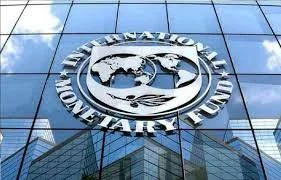Washington DC June 7 2023: After growing 3.1 percent last year, the global economy is set to slow substantially in 2023, to 2.1 percent, amid continued monetary policy tightening to rein in high inflation, before a tepid recovery in 2024, to 2.4 percent.
Tight global financial conditions and subdued external demand are expected to weigh on growth across emerging market and developing economies (EMDEs). Projections for many countries have been revised down over the forecast horizon, with upgrades primarily due to stronger-than-expected data at the beginning of 2023 more than offset by downgrades thereafter. Inflation has been persistent but is projected to decline gradually as demand weakens and commodity prices moderate, provided longer-term inflation expectations remain anchored.
Global growth could be weaker than anticipated in the event of more widespread banking sector stress, or if more persistent inflation pressures prompt tighter-than-expected monetary policy. Weak growth prospects and heightened risks in the near term compound a long-term slowdown in potential growth, which has been exacerbated by the overlapping shocks of the pandemic, the Russian Federation’s invasion of Ukraine, and the sharp tightening of global financial conditions. This difficult context highlights a multitude of policy challenges. Recent bank failures call for a renewed focus on global financial regulatory reform. Global cooperation is also necessary to accelerate the clean energy transition, mitigate climate change, and provide debt relief for the rising number of countries experiencing debt distress. At the national level, it is imperative to implement credible policies to contain inflation and ensure macroeconomic and financial stability, as well as undertake reforms to set the foundations for a robust, sustainable, and inclusive development path.
Regional Prospects
Growth is projected to diverge across EMDE regions this year and next. It is expected to pick up in 2023 in East Asia and Pacific (EAP) and Europe and Central Asia (ECA), as China’s reopening spurs a recovery and as growth prospects in several large economies improve. In contrast, growth is forecast to moderate in all other regions, particularly in Latin America and the Caribbean (LAC) and the Middle East and North Africa (MNA). Headwinds from weak external demand, tight global financial conditions, and high inflation will drag on activity this year, especially in LAC, South Asia (SAR), and Sub-Saharan Africa (SSA). The lingering impact of Russia’s invasion of Ukraine will continue to weigh on growth across regions, particularly in ECA. Next year, growth is projected to moderate in EAP and SAR but to pick up elsewhere as domestic headwinds ease and external demand strengthens. Downside risks to the outlook for all regions include possible further global financial stress and more persistent domestic inflation than projected in the baseline. Geopolitical tensions, conflict and social unrest, and natural disasters stemming from climate change also present downside risks, to varying degrees. The materialization of such risks could further weaken potential growth, leading to a prolonged period of slower growth in all EMDE regions.
Financial Spillovers of Rising U.S. Interest Rates
The rapid rise in interest rates in the United States poses a significant challenge to EMDEs. As the Federal Reserve has pivoted toward a more hawkish stance to rein in inflation, a substantial part of the sharp increases in U.S. interest rates since early 2022 has been driven by shocks that capture changes in perceptions of the Fed’s reaction function. These reaction shocks are associated with especially adverse financial market effects in EMDEs, including a higher likelihood of experiencing a financial crisis. Their effects also appear to be more pronounced in EMDEs with greater economic vulnerabilities. These findings suggest that major central banks can alleviate adverse spillovers through proper communication that clarifies their reaction functions. They also highlight that EMDEs need to adjust macroeconomic and financial policies to mitigate the negative impact of rising global and U.S. interest rates.
Fiscal Policy Challenges in Low-Income Countries
The room for fiscal policy to maneuver has narrowed in low-income countries (LICs) over the past decade: LIC debt has grown rapidly as sizable and widening deficits offset the debtreducing effects of growth. Fiscal deficits have reflected growing spending pressures, including on debt service, amid persistent revenue weakness, especially for grants and income tax revenues. As a result, 14 out of the 28 LICs were assessed as being in debt distress or at a high risk of debt distress as of end-February 2023. Creating room for fiscal policy requires generating higher revenues, making spending more efficient, and improving debt management practices. These measures need to be embedded in improvements to domestic institutional frameworks and supported by well-coordinated global policies both to improve fiscal policy management and to address debt challenges.











